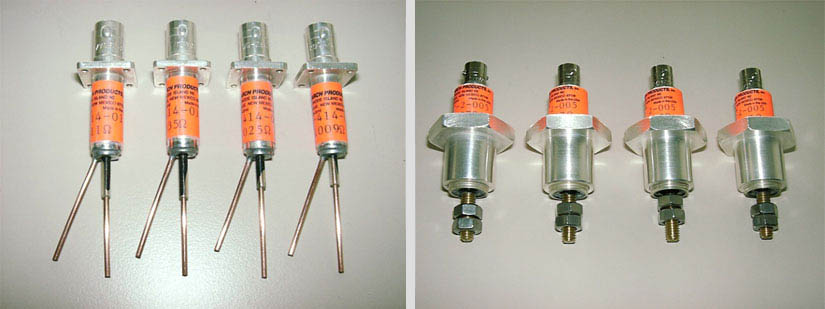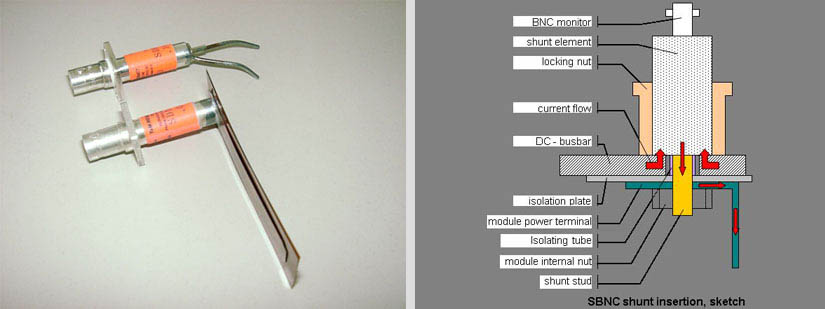Coaxial Shunts

SDN-414-series & SBNC- series with big solid locking nut
Access technical data of shunt models
Your choice is fixed? Quote request
Most types are available within short lead times. Any quote request will be processed within 24h.
Coaxial Shunt – general information
Our high frequency coaxial shunts reach bandwidths up to 2 GHz and are perfectly suited as current probes to measure fast transient waveforms.
Modern semiconductors (SiC, GaAs,…) exceed dI/dt limits of commercially available rogowskies and current transformers. With our shunts Characterization is still possible.
We distribute standard products from T&M Research Products, Inc. Albuquerque, NM. As we are closely connected for many years, we are able to design & provide special types that will fulfill individual requirements.
Values besides the catalogue specification are possible on request. Special geometries that fit power electronics environments can be realized at reasonable cost.
We assist in the choice of the optimal current probe for your application. Please note that „most powerful” does not always have to be the electrically best choice!

SDN- and TT-SDN series
Some application notes – how to use a coaxial shunt
The right choice of a coaxial shunt does not only focus bandwidth and output signal level.
Selection
Any test setup that is not driven by an ideal current source will suffer from the additional parasitic inductance when the current probe is inserted. Always design to the minimum area that a current additionally has to pass through in order to reach the probe.
Choosing a mechanically big unit suggests the benefit of robustness in case of damage of the device under test. But the risk of changing a commutation cell so much that all experimental results will not give a picture of the reality in the application is very high.
We propose to choose the shunt size by the maximum energy per non repetitive pulse train – including sufficient cooling time between the pulse trains. Repetition rate will lead to the nominal power dissipation needed, or will call for active cooled shunt elements.
Mechanical Stress
Center threads –especially for all smaller series as SDN-, A-, SBNC-models- must only be torqued down by hand! Otherwise the internal shunt element will be torn apart and will stay permanently damaged! We cannot provide any warranty if a shunt is returned showing an overstressed center tab!
Signal Monitoring
Current shunts are not isolated! Please check possible ground loops from load to monitoring device and respect safety issues. We recommend the use of an external 50 Ohm feed-through adapter at the monitoring side to suppress reflections of BNC cables.
Accuracy and Temperature Drift
All shunts are shipped with 4% from target value. Each shunt is calibrated within an accuracy of 0.2%. The exact value is attached on the label of each shunt. Calibration certificates are available.
Current shunts show up with a positive temperature coefficient of 10-12ppm/°C.
Stand-alone convectional cooled setups should not exceed 60°C shunt surface temperature. Using forced air flow, a case temperature of 30°C at 2,8m³/min should not be exceeded due to shunt internal heat flow.
Please find attached a selection of additional hints for download. We do not claim this selection to cover all challenges. We cannot take over responsibility for the content provided by 3rd parties. If you like to add your advice, please use:contact [at] ib-billmann[dot] de
Application Notes
Please find attached a free selection of hints for download. We do not claim this selection to cover all challenges. We cannot take over responsibility for the content provided by 3rd parties. If you like to add your advices, please use: contact[at]ib-bilmann[dot]de

F-series, M-series, SBNC-series and thread adapters